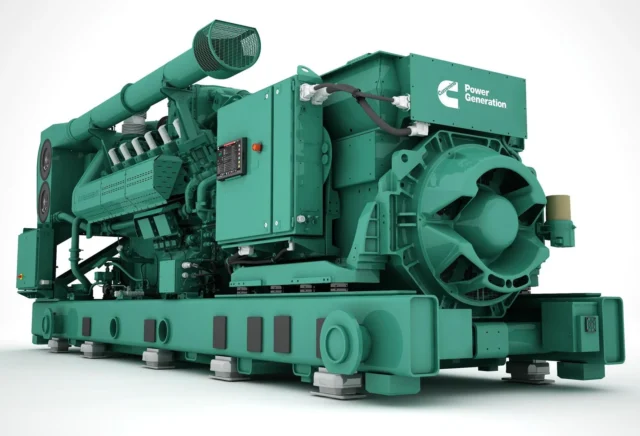1. Introduction
Proper grounding of generator neutrals is critical to ensure personnel safety, protect equipment, and enable effective fault detection. IEEE Std C37.101, “Guide for Generator Ground Protection,” outlines various grounding methods and their associated protection strategies. A key
consideration during ground faults is not only the magnitude of fault current , but also the presence of harmonic components, which can significantly affect protection performance and insulation stress.
This article explores commonly used generator grounding methods, the typical ground fault currents associated with each, and the expected harmonic behavior under fault conditions.
2. Generator Grounding Methods
Generator grounding methods are selected based on system voltage, continuity requirements, fault tolerance, and economic considerations. The most common methods include:
2.1 Solid Grounding
Description
The generator neutral is directly connected to earth without any impedance.
Characteristics
- Fault Current: High (often several kiloamperes).
- Protection: Simple overcurrent relays.
Advantages
- Fast and reliable fault detection.
- Simplified protection design.
Disadvantages
- High fault currents can severely damage stator windings and cores.
- Not preferred for large, critical generators due to risk of arc flash.
2.2 Low-Resistance Grounding
Description
A resistor is installed between the generator neutral and earth, limiting fault current typically to 100–400 A.
Characteristics
- Fault Current: Moderately high.
- Protection: Standard relays with adjusted settings.
Advantages
- Reduced fault energy compared to solid grounding.
- Maintains effective fault detection.
Disadvantages
- Resistors must be rated for continuous and short-time operation.
- Still risk of damage depending on fault location and duration.
2.3 High-Resistance Grounding (HRG)
Description
A high-value resistor or resistor-loaded grounding transformer limits ground fault current to below 10 A.
Characteristics
- Fault Current: Very low (typically 5–10 A).
- Protection: Specialized relays, including 3rd
harmonic undervoltage or neutral overvoltage.
Advantages
- Limits fault energy and insulation damage.
- Enables continued operation during a single ground fault.
- Reduces arc flash risk.
Disadvantages
- Fault current may be too low for standard protection.
- Requires complex detection and coordination.
2.4 Ungrounded Systems
Description
The generator neutral is not intentionally connected to ground.
Characteristics
- Fault Current: Negligible (limited to capacitance of
windings). - Protection: Based on transient detection or 3rd
harmonic analysis.
Advantages
- High system availability during first fault.
- No fault current under steady-state conditions.
Disadvantages
- Difficult to detect ground faults.
- High risk of overvoltage due to resonance or ferroresonance.
- Second ground fault can cause severe damage.
2.5 Grounding via Transformer and Resistor
Description
A zigzag or wye-delta transformer is used to provide a grounding point for systems without accessible neutrals.
Characteristics
- Fault Current: Depends on resistor size; generally low to moderate.
- Protection: Similar to HRG systems.
Advantages
- Provides artificial neutral for grounding.
- Allows high-resistance grounding in otherwise ungrounded configurations.
Disadvantages
- Additional equipment and space required.
- Must manage potential resonance and harmonics.
3. Harmonic Behavior During Ground Faults
The harmonic content of ground fault current varies depending on the grounding method. Harmonic currents arise from non-linearities in the magnetic circuit, arc instability, and zero-sequence resonance.undervo
3.1 Harmonic Generation Mechanisms
- 3rd Harmonic (180 Hz): Common in HRG systems; detected via undervoltage or differential schemes.
- 5th and 7th Harmonics: Occur due to core saturation and asymmetrical flux.
- High-Frequency (>1 kHz): Arise from arcing faults and transient resonance in ungrounded systems.
3.2 Harmonic Behavior Summary
| Grounding Type | Typical Fault Current | Harmonic Content | Remarks |
|
Solid Grounding |
Very high (>1000 A) |
Low |
Sinusoidal waveform dominates. |
|
Low-Resistance |
100–400 A |
Moderate |
Some distortion due to limited impedance. |
|
High-Resistance |
<10 A |
High |
Sensitive to 3rd harmonic and transient harmonics. |
|
Ungrounded |
<5 A |
Very High |
High-frequency transient harmonics and resonance. |
|
Transformer Grounding |
10–100 A |
Moderate |
Harmonics depend on transformer design and system |
4. Protection Considerations
Different harmonic-based and zero-sequence detection schemes are used depending on grounding type:
| Protection Method | Target System | Principle |
|
3rd Harmonic Undervoltage |
HRG, Ungrounded |
Loss of 3rd harmonic in faulted phase |
|
Neutral Overvoltage (59N) |
HRG |
Detects rise in neutral voltage |
|
Generator Ground Fault Relay (64G) |
All |
Monitors fault current and voltage |
|
Transient Detection |
Ungrounded |
Captures fast-decay harmonic transients |
5. Conclusion
The selection of a generator grounding method must consider not only the desired fault current magnitude, but also the harmonic behavior during faults. High-resistance and ungrounded systems, while effective in limiting damage, are more susceptible to harmonic transients and require advanced detection methods. Solid or low-resistance grounding offers simplicity in protection but increases the risk of equipment damage.
Proper grounding and protection coordination ensures safety, equipment longevity, and reliable fault detection.
References:
- IEEE Std C37.101 – Guide for Generator Ground Protection
- IEEE Std 142 (Green Book) – Recommended Practice for Grounding of
Industrial and Commercial Power Systems - IEEE Std C62.92.2 – Grounding of Synchronous Generator Systems
